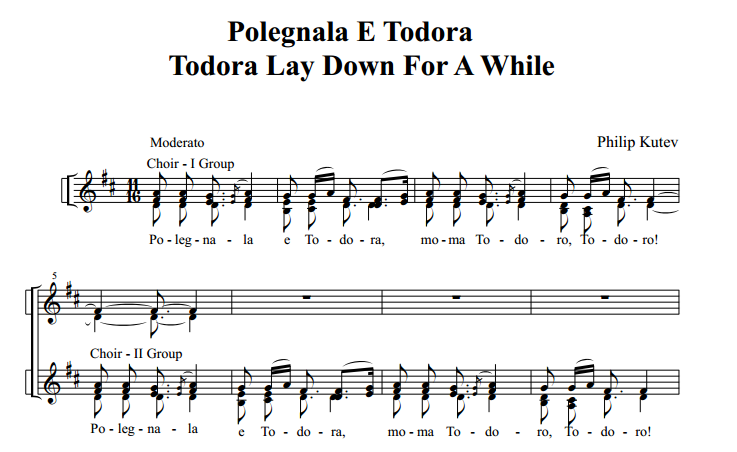Varushkan rhythms
To get a Varushkan sound to your drumming, use asymmetrical rhythm. What does this mean? Googling "Bulgarian rhythm" will give you lots of information but essentially it means that you group your notes in uneven groups across the bar. So if you are playing in 4/4 time, don't play two groups of four beats or four groups of two beats, play 3,3,2.
Better however is to go for a 7/8 bar - this is traditional for Bulgarian folk dances and can be split in a lot of fun ways:
- 2,3,2 gives a steady, kind of funky, rhythm.
- 3,2,2 gives a rushed, driving feel.
- 2,2,3 gives a sort of anticipatory feeling as the last beat keeps listeners hanging on.
Got it? Easy peasy? Then mix and match your 7/8 bar with a bar of a different length e.g. a 6/8 bar (two groups of 3 quavers), a 3/4 bar (3 groups of 2 quavers), or a 4/4 bar, split however you like.
Totally new to weird time signatures?
Fear not, here is a good way of getting some of these irregular rhythms, for example, this is how to do a classic Bulgarian 7/8, 6/8 pattern.
- Say the following to yourself, making sure each syllable is the same length: "Staple, triangle, staple, triangle, triangle."
- Repeat ad nauseum.
- Then make sure you strongly emphasise the first syllable in each word.
- Then take out the words and just do it with "duh" or beats on a drum.
- Then once you've got it, do fun stuff like one person do the first one and someone else do the other ones so you end up with: Dum tish, dum tish tish, dum tish, dum tish tish, dum tish tish
You can use staple and triangle to learn any of the cool rhythmic patterns suggested.
Got a mixed ability group?
It can be fun to do asymmetric rhythm over the top of a straight 4/4 beat. Try a 3,3,2 quaver pattern with someone beating simple 4/4 at the same time.
Lovely choral example
This gorgeous piece (which yes, I am in the process of filking) shows the wonderful complexity of Bulgarian rhythm. Listen to it on youtube here: http://youtu.be/pwNKTXpy67M
It looks (and sounds) very complex but you can break down the rhythm into staples and triangles to help. (Ignoring the grace notes) the pulse in the first four bars goes:
Staple, staple, triangle, staple, staple | Staple staple triangle triangle and | Staple, staple, triangle, staple, staple | Staple, staple, triangle, staple, staple.
Count it through with the recording. Then stick the grace notes in (they're simply doing them as semiquavers).
